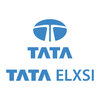Technical Specialist
200+ Technical Specialist Interview Questions and Answers

Asked in HCLTech

Q. What SolarWinds features are you familiar with?
Solar wind is a stream of charged particles released from the upper atmosphere of the Sun.
Solar wind is composed of electrons, protons, and alpha particles.
It can have speeds ranging from 250 to 800 km/s.
Solar wind can cause auroras and geomagnetic storms on Earth.
It can also affect satellite and spacecraft operations.
Solar wind is influenced by the Sun's magnetic field and can vary in intensity.
It is a key factor in space weather and space exploration.

Asked in Accenture

Q. What programming language are you most familiar with,describe a troubleshooting process you d'follow for a crashing program, how can you debug a program while it's being used?,what is your expertise and what wo...
read moreI am most familiar with Java. I follow a systematic troubleshooting process, use debugging tools, and constantly seek to expand my expertise.
Identify the error message or symptoms of the crashing program
Review the code for any obvious mistakes or bugs
Use debugging tools like breakpoints and print statements to pinpoint the issue
Continuously test and monitor the program while making changes
Seek to expand expertise in Java and learn more about advanced debugging techniques
Technical Specialist Interview Questions and Answers for Freshers

Asked in HCLTech

Q. Which protocol do we use for monitoring network devices?
SNMP is the protocol used for monitoring network devices.
SNMP stands for Simple Network Management Protocol
It is used to manage and monitor network devices such as routers, switches, servers, etc.
SNMP allows network administrators to collect information about network performance, usage, and errors.
Examples of SNMP monitoring tools include Nagios, Zabbix, and PRTG Network Monitor.

Asked in Birlasoft

Q. How many years of experience do you have as a Linux System Administrator?
I have 5 years of experience as a Linux System Administrator.
5 years of experience in managing Linux servers and systems
Proficient in troubleshooting, maintenance, and security of Linux systems
Experience with shell scripting, automation, and monitoring tools
Certifications like RHCSA or LPIC demonstrate expertise
Worked with distributions like CentOS, Ubuntu, and Red Hat

Asked in HCLTech

Q. 1. What is HANA replication? 2. What is fencing? 3. What is near zero downtime technique, how to plan? 4. Migration process? 5. What are sum tool phases and role of standard configuration, High level configurat...
read moreTechnical Specialist interview questions on HANA replication, fencing, migration, minimizing downtime, and export/import files.
HANA replication is the process of copying data from one HANA system to another.
Fencing is a mechanism to prevent split-brain scenarios in a high-availability setup.
Near zero downtime technique involves careful planning and execution to minimize downtime during system upgrades or migrations.
Migration process involves moving data from one system to ano...read more

Asked in HCLTech

Q. whenever restart SQL server one database comes online late what is the reason what are are startup parameters how will you troubleshoot database goes into suspect mode
The reason for a database coming online late after restarting SQL server could be due to various factors such as large database size, heavy transactional activity, or insufficient server resources.
Large database size can result in longer recovery time during startup.
Heavy transactional activity can delay the recovery process.
Insufficient server resources like CPU, memory, or disk I/O can slow down the startup process.
Other factors like network issues or conflicts with other s...read more
Technical Specialist Jobs




Asked in ZeroFOX

Q. What actions do you take if you encounter a brand impersonation through domain cloning or intellectual property rights infringement?
Addressing brand impersonation involves immediate action to protect intellectual property and mitigate risks.
Identify the impersonating domain and gather evidence of infringement.
Notify the domain registrar to take down the cloned site, providing proof of ownership.
File a complaint with relevant authorities, such as the Internet Crime Complaint Center (IC3).
Engage legal counsel to explore options for cease and desist letters or lawsuits.
Monitor online presence regularly to pr...read more

Asked in ZeroFOX

Q. What are the risks associated with social media-based adversaries, and what initial steps do you take to mitigate them?
Social media adversaries pose risks like misinformation, data breaches, and reputation damage; mitigation involves monitoring and education.
Misinformation campaigns can spread false information rapidly; implement fact-checking protocols.
Data breaches can occur through social engineering; train employees on recognizing phishing attempts.
Reputation damage can arise from negative reviews or comments; establish a crisis communication plan.
Identity theft can happen through social ...read more
Share interview questions and help millions of jobseekers 🌟


Asked in ZeroFOX

Q. What is social media security, and how can you differentiate brand impersonation on Facebook, Instagram, X (formerly Twitter), and LinkedIn?
Social media security involves protecting brands from impersonation and ensuring safe online interactions.
Brand impersonation occurs when fake accounts mimic a legitimate brand to deceive users.
On Facebook, look for verified badges; impersonators often lack these.
Instagram uses a similar verification system; check for blue checkmarks on profiles.
On X, verify the account's authenticity by checking for a blue checkmark and the account's follower count.
LinkedIn profiles should h...read more

Asked in ZeroFOX

Q. What is the OSINT framework for social media intelligence, and what is meant by digital risk protection for social media and domain infringement?
OSINT for social media involves gathering publicly available data to assess risks and protect against digital threats.
OSINT (Open Source Intelligence) framework helps in collecting data from social media platforms like Twitter, Facebook, and Instagram.
Digital risk protection involves monitoring social media for brand mentions, impersonations, and potential threats to reputation.
Domain infringement refers to unauthorized use of a brand's name or likeness in domain names, which...read more

Asked in QualityKiosk Technologies

Q. Given a scenario where there is slowness in the system and no APM tool available, how would you identify and solve the issue?
Identify potential causes through system analysis, logs, and monitoring tools. Implement troubleshooting steps to resolve the issue.
Analyze system performance metrics such as CPU usage, memory usage, disk I/O, and network traffic to identify bottlenecks.
Check system logs for any error messages or warnings that could indicate the source of the slowness.
Review application logs to see if there are any specific requests or processes causing the slowdown.
Use command line tools lik...read more

Asked in QualityKiosk Technologies

Q. In what cases should a thread dump be taken, how many thread dumps are required, and at what interval?
Thread dumps are crucial for diagnosing performance issues and deadlocks in multi-threaded applications.
Take a thread dump when the application is unresponsive or experiencing high CPU usage.
Capture multiple thread dumps (3-5) to analyze trends over time.
Thread dumps should be taken at intervals of 5-10 seconds to observe changes in thread states.
Example: If a web application is slow, take a thread dump to identify blocked threads.
Use tools like jstack or VisualVM to capture ...read more

Asked in HCLTech

Q. How can you reduce or extend the size of an LVM partition?
To reduce/extend size of a lvm partition, use lvresize command.
Use lvresize command with appropriate options to reduce/extend the size of a lvm partition.
To reduce the size, use the option --resizefs to resize the file system as well.
To extend the size, use the option --resizefs only if the file system supports online resizing.
Example: lvresize --resizefs --size -2G /dev/vg01/lv01 to reduce by 2GB.
Example: lvresize --resizefs --size +2G /dev/vg01/lv01 to extend by 2GB.

Asked in HCLTech

Q. How do you troubleshoot a Mac that is not powering on?
To troubleshoot a Mac that is not powering on, start by checking the power source and connections.
Check if the power source is working properly
Check if the power cable is properly connected to the Mac
Try resetting the SMC (System Management Controller)
Try resetting the PRAM (Parameter RAM)
Check if there are any hardware issues such as a faulty battery or power supply
Try booting the Mac in Safe Mode

Asked in Apple

Q. Tell me about a time when you had to disagree with management.
I raised concerns about a project timeline that jeopardized quality, leading to a productive discussion with management.
Identified a critical issue with project deadlines that could compromise quality.
Gathered data and examples to support my concerns, including past project failures.
Scheduled a meeting with management to present my findings and suggestions.
Proposed a revised timeline that allowed for thorough testing and quality assurance.
Management appreciated the proactive ...read more

Asked in Continental

Q. What is continuous integration and continuous delivery?
Continuous integration is the practice of frequently merging code changes into a shared repository, while continuous delivery is the process of automatically deploying those changes to production.
Continuous integration involves developers frequently merging their code changes into a shared repository, which is then automatically built and tested.
Continuous delivery takes this a step further by automatically deploying the changes to production once they pass all tests.
Both pra...read more

Asked in HCLTech

Q. Do you have any experience in preparing Root Cause Analyses (RCA)?
Yes, I have experience in preparing Root Cause Analyses (RCA).
I have conducted RCA for software bugs to identify underlying issues.
I have used tools like Fishbone Diagrams and 5 Whys to determine root causes.
I have presented findings and recommendations based on RCA to stakeholders.

Asked in HCLTech

Q. What is stp ? What is hsrp ? What is Rstp and difference between stp ? Secenario questions? What is vtp ? What are port roles ?
STP is a protocol used to prevent network loops. HSRP is a protocol used for redundancy. RSTP is an updated version of STP.
STP stands for Spanning Tree Protocol
HSRP stands for Hot Standby Router Protocol
RSTP stands for Rapid Spanning Tree Protocol
STP prevents network loops by blocking redundant paths
HSRP provides redundancy by allowing multiple routers to share a virtual IP address
RSTP is an updated version of STP that provides faster convergence times
VTP stands for VLAN Trun...read more

Asked in QualityKiosk Technologies

Q. If there is slowness in the system and you have a thread dump, what analysis will you perform?
I would analyze the thread dump to identify any bottlenecks or issues causing the system slowness.
Identify any threads that are in a blocked or waiting state
Look for any threads consuming excessive CPU or memory
Check for any deadlocks or resource contention issues
Analyze the stack traces to pinpoint the root cause of the slowness

Asked in IPD Analytics

Q. What is the difference between the US and Japanese patent system?
US and Japanese patent systems differ in terms of requirements, processes, and enforcement.
US patent system is based on first-to-invent, while Japanese system is based on first-to-file.
US patents have a longer duration of 20 years from the filing date, while Japanese patents have a duration of 20 years from the filing date or 10 years from the registration date, whichever is shorter.
US patent applications require a detailed description of the invention, while Japanese applica...read more

Asked in Apple

Q. Tell me about a time when you had to disagree with your manager.
I respectfully disagreed with my manager on a project deadline, advocating for quality over speed.
Identified a potential issue with the project timeline that could compromise quality.
Gathered data and examples from previous projects to support my argument.
Scheduled a one-on-one meeting with my manager to discuss my concerns.
Proposed an alternative timeline that allowed for thorough testing and revisions.
Ultimately, my manager appreciated my input, and we adjusted the deadline...read more

Asked in Apple

Q. Tell me about a time when you were not able to meet expectations.
I once missed a project deadline due to unforeseen technical challenges, which taught me valuable lessons in time management.
Faced a critical project with a tight deadline.
Encountered unexpected technical issues with software integration.
Tried to resolve issues but underestimated the time required.
Communicated with my team and stakeholders about the delay.
Learned the importance of contingency planning and time buffers.

Asked in Asian Paints

Q. Why is the Siemens 300 PLC added to the SIMATIC NET card?
Siemens 300 PLC is added in Simatic Net card for communication and networking purposes.
Simatic Net card provides a communication interface for Siemens PLCs
Siemens 300 PLC is compatible with Simatic Net card for networking
Simatic Net card allows remote access and monitoring of Siemens 300 PLC
Siemens 300 PLC can be integrated with other devices using Simatic Net card

Asked in Tata Elxsi

Q. What are the VxRail, VSAN, and NSX commands to verify the IPsec tunnel?
VxRail, Vsan, NSX commands to verify IPsec tunnel
For VxRail, use 'show ipsec sa' command to verify IPsec tunnel status
For Vsan, use 'esxcli network ip connection list' command to check IPsec tunnel connections
For NSX, use 'get vpn ipsec sa' command to view IPsec tunnel information

Asked in Tata Elxsi

Q. What is the upgrade method for NSX-V/T, and what are the differences between them?
NSX-V/T can be upgraded using in-place upgrade, side-by-side upgrade, or hybrid upgrade methods.
In-place upgrade involves upgrading the existing NSX-V/T deployment without replacing the hardware or virtual machines.
Side-by-side upgrade involves deploying a new NSX-V/T instance alongside the existing one and migrating workloads.
Hybrid upgrade combines elements of in-place and side-by-side upgrades, allowing for a phased migration.
In-place upgrade is simpler but may have downti...read more

Asked in Birlasoft

Q. What new features are introduced in the latest version of Apex?
Apex latest version introduces new features like Lightning Web Components, Apex Recipes, and improved debugging capabilities.
Lightning Web Components allow developers to build reusable components using modern web standards like JavaScript and HTML.
Apex Recipes provide pre-built code snippets for common use cases, making development faster and easier.
Improved debugging capabilities include enhanced error messages and better tools for troubleshooting code issues.

Asked in HCLTech

Q. Explain traffic flow between different networks with a diagram.
Traffic flow between different networks can be explained using a diagram.
Traffic flows between networks through routers or gateways.
Each network has its own unique IP address range.
Routing protocols are used to determine the best path for traffic to take.
Firewalls can be used to control and filter traffic between networks.
Examples of different networks include LAN, WAN, and the internet.

Asked in Infosys

Q. Write code to process a series of numbers in ascending order, adding 1 to the first number, 2 to the second, and so on.
Add 1 to each number in an ascending series
Check if the numbers are in ascending order
If yes, start with 1 and add it to the first number
Continue adding subsequent numbers with increasing values of 1

Asked in Pearson

Q. How do you break down a monolithic system into a microservice architecture?
Breaking down a monolithic system into microservices involves identifying bounded contexts, defining service boundaries, and implementing communication between services.
Identify bounded contexts within the monolithic system
Define service boundaries based on identified contexts
Implement communication between microservices using APIs or messaging systems
Decompose the monolithic system into smaller, independent services
Use containerization technologies like Docker for deployment

Asked in TCS

Q. What is the difference between method overloading and method overriding?
Method overloading is having multiple methods in the same class with the same name but different parameters, while method overriding is redefining a method in a subclass with the same name and parameters as in the superclass.
Method overloading is resolved at compile time based on the method signature, while method overriding is resolved at runtime based on the object type.
In method overloading, the return type may or may not be different, but the parameters must be different....read more
Interview Questions of Similar Designations
Interview Experiences of Popular Companies





Top Interview Questions for Technical Specialist Related Skills



Reviews
Interviews
Salaries
Users

















